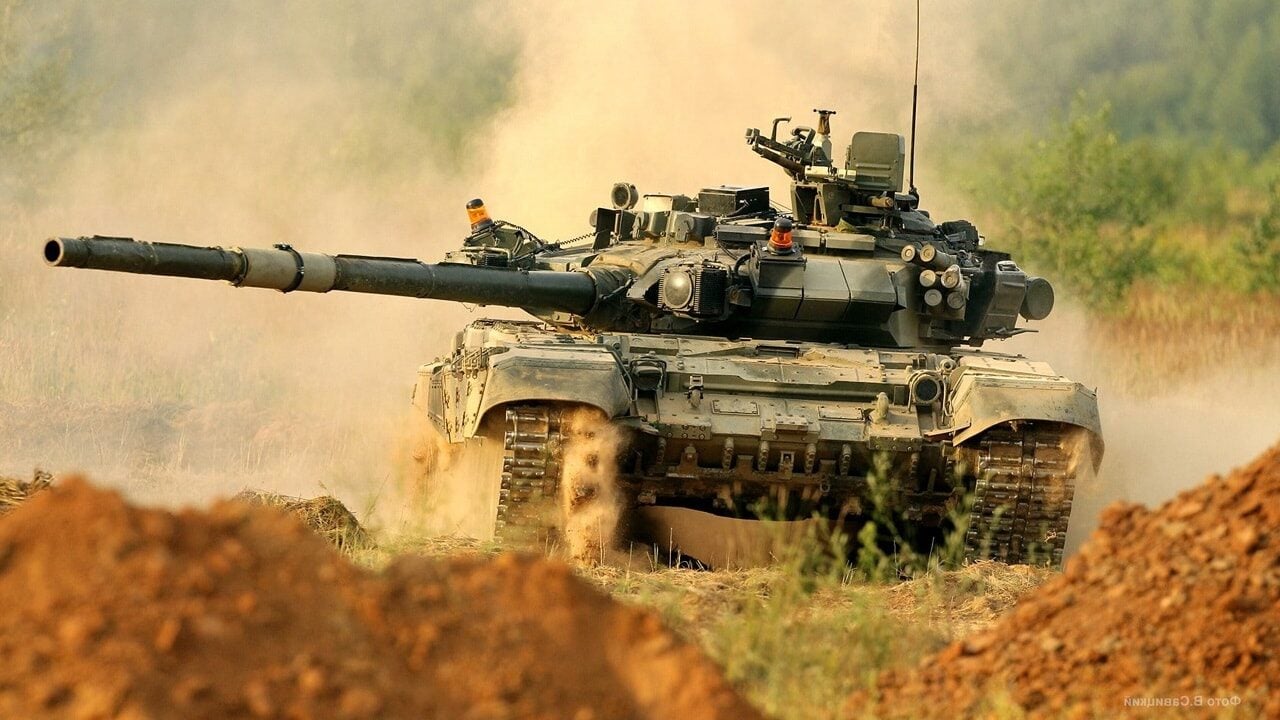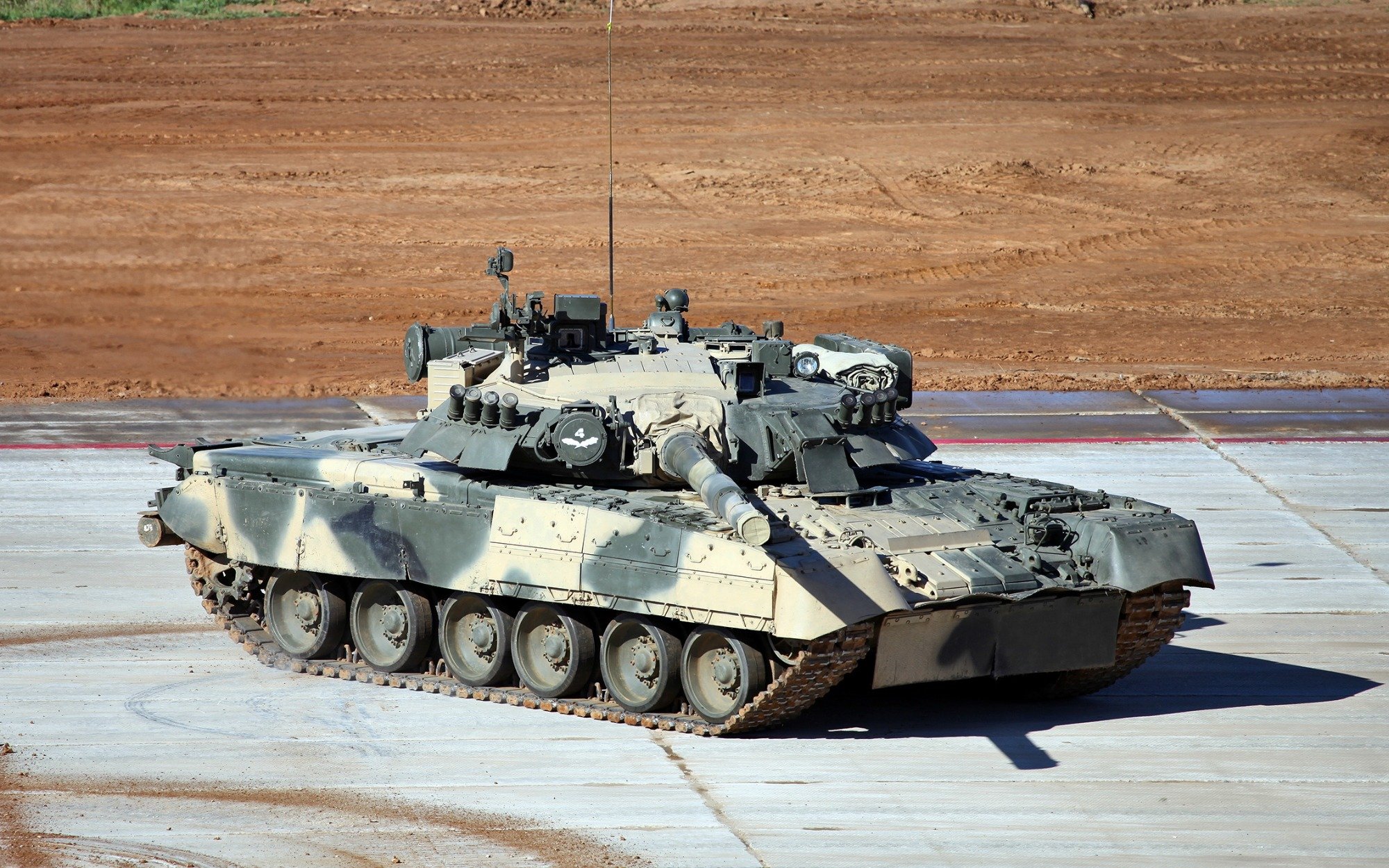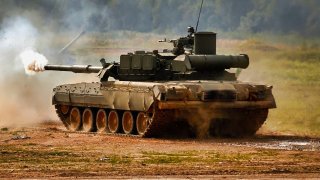Russia's T-80 Tank Is Just a Metal Deathtrap Nightmare
In early May, a Ukrainian M2A2 Bradley successfully ambushed and destroyed a Russian T-80 main battle tank (MBT) using a BGM-71 TOW anti-tank missile. This incident highlights the effectiveness of the Bradley, which, despite being an infantry fighting vehicle, has proven formidable against tanks like the T-80.
Summary and Key Points: In early May, a Ukrainian M2A2 Bradley successfully ambushed and destroyed a Russian T-80 main battle tank (MBT) using a BGM-71 TOW anti-tank missile.

-This incident highlights the effectiveness of the Bradley, which, despite being an infantry fighting vehicle, has proven formidable against tanks like the T-80.
-The T-80, derived from the T-64, was designed for rapid, fuel-intensive invasions but has struggled in modern conflicts. Its shortcomings, coupled with poor crew training, have led to significant losses in Ukraine. The T-80's design flaws make it vulnerable, rendering it a "steel coffin" on the battlefield.
Why the T-80 Tank is a Liability for Russia in Ukraine
In early May, a Ukrainian M2A2 Bradley successfully ambushed and destroyed a Russian T-80 main battle tank (MBT). The quick-moving Bradley was able to employ its heavy anti-tank guided missile at the tank, and the fight was over before the crew of the steel behemoth likely knew what hit them.
"Bradley infantry fighting vehicle against the Russian T-80 tank! Fighters of the 47th separate mechanized brigade destroyed enemy equipment using a [BGM-71] TOW anti-tank missile. Credit to the Discovery crew of the 2nd Mechanized Battalion," the Ukrainian 47th Separate Mechanized Brigade wrote on the Telegram social messaging app, while combat footage was also shared on Facebook.
Washington provided Kyiv with a total of 186 M2 Bradleys, Newsweek reported. Though not tanks, the infantry fighting vehicles – which are armed with a 25mm cannon and anti-tank missiles – have proven as effective as (and perhaps even more than) the M1 Abrams MBT. Of course, it should be remembered that the Bradley has a proven track record, as it was credited with destroying more Iraqi T-72s than the Abrams in the 1991 Persian Gulf War.

However, that fact speaks as much to the failure of the T-72 as it does the success of the M2. Likewise, the incident in May against the T-80 further highlights that the Russian MBT isn't all that effective.
The T-80 is a Problem-Plagued MBT
The heart of the problem is that the T-80 was largely a step sideways at best in tank evolution, as it was derived not from the T-72 but rather from the T-64. While the T-64 was quite the modern tank when it first rolled into service during the Cold War, it was expensive to produce and complicated to maintain.
The Kremlin sought to address its flaws and produce a modern MBT instead of starting from scratch. It proved to be an improvement over the T-64 and incorporated some features from the T-72. Thus the T-80 was an evolutionary step forward, but it was largely designed for one purpose. Equipped with a gasoline rather than diesel engine, it was speedy, and Soviet designers envisioned it as being able to roll through West Germany and France, reaching the English Channel in five days.
Even though it was expensive to produce, its designers believed it would be crucial in a war with NATO where it would serve as the vanguard in a Soviet/Warsaw Pact blitzkrieg. Fortunately, as we avoided World War III (so far at least), the shortcomings of the T-80 weren't so readily apparent. However, it is clear it wouldn't have been all that effective against NATO forces.
The T-80 consumed fuel at a disturbing rate. The Kremlin war planners must have expected its invasion of Western Europe would face no resistance and that fuel would be readily available at every gasoline station on the way to the English Channel.
Fit for a Parade, Not Combat
The T-80 didn't live up to expectations when it was used in the First Chechen War (1994-96), where it fell victim to man-portable anti-tank weapons. It was even sidelined during the Second Chechen War in 1999 and the 2008 Russo-Georgian conflict. It probably wouldn't have seen service in the ongoing conflict in Ukraine had the Kremlin's forces made it to Kyiv in the planned three days.

But just as the T-80 couldn't have made to the English Channel it in five, Russia's forces didn't take Kyiv. Instead, they took massive losses, and the T-80 has been pressed into service. It would be quick to suggest, the T-80 is better than nothing – but as Harrison Kass wrote for The National Interest, "The Russians have already lost roughly 700 T-80 tanks since the war began. The T-80's survivability problems are a common theme."
Indeed, some of the absolute best tanks in the world – the Russian T-90, German Leopard 2, British Challenger 2, and the American M1 Abrams – have been destroyed in the fighting. The conflict has shown how man-portable rocket launchers and commercial off-the-shelf drones have been employed by both sides with great effect. To some, this has signaled that the days of the tank are over.
It shouldn't be surprising that platforms like the T-62, and even older T-54/55 series tanks have been destroyed in large numbers. Those are vehicles that were past their prime even before the dissolution of the Soviet Union. The T-80 was a tank designed to help the Soviet's forces achieve a breakthrough and it now seems it would have failed even more miserably than it has in Ukraine. One part of this is the failure of the training of the crews, but another fact is that it just isn't a good design.

And as long as it remains on the battlefield, the T-80 will be little more than a steel coffin for those operating it.
Author Experience and Expertise: Defense Expert Peter Suciu
Peter Suciu is a Michigan-based writer. He has contributed to more than four dozen magazines, newspapers, and websites with over 3,200 published pieces over a twenty-year career in journalism. He regularly writes about military hardware, firearms history, cybersecurity, politics, and international affairs. Peter is also a Contributing Writer for Forbes and Clearance Jobs. You can follow him on Twitter: @PeterSuciu. You can email the author: [email protected].
All images are Creative Commons.
From the Vault


